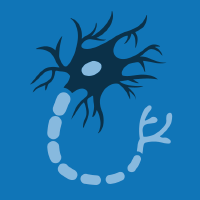Topic Menu
► Topic MenuTopic Editors




Antioxidants and Oxidative Stress in Brain Health
Topic Information
Dear Colleagues,
Oxidative stress is defined as an imbalance in redox homeostasis, which leads to an accumulation of reactive oxygen/nitrogen species (ROS/RNS). Within certain limits, ROS can play important roles and work as secondary messengers, participating in the regulation of intracellular pathways. In physiological conditions, the deleterious effects of ROS production are efficiently neutralized by antioxidant pathways, which regulates oxygen consumption and redox generation capacity. Nevertheless, excess ROS can negatively influence the cells process, modulating the functions of nucleic acids, lipids, and proteins inducing inflammation, apoptosis, and autophagy, leading to organs/systems dysfunction, and allowing disease development and progression. In this context, the brain, with high-energy demand and weak antioxidant capacity, becomes an easy target of excessive oxidative insult. Brain oxidative homeostasis is essential for normal central nervous system (CNS) activity and is one of the key factors contributing to CNS impairment. When ROS production exceeds the scavenging capacity of the antioxidant response system, protein oxidation and lipid peroxidation occur, causing cellular degeneration and even functional decline. The consequences of excessive ROS production, such as mitochondrial dysfunction, apoptosis, and protein misfolding, are among the main therapeutic targets. In this scenario, synthetic antioxidants and phytochemicals, both extracts and pure compounds, have been identified as promising candidates in the prevention/treatment of neurological disorders. The mechanisms by which these compounds exert their beneficial effects are not yet fully understood.
Therefore, authors are invited to present original research articles, review papers, clinical case reports, or communications focused on the effects of natural and synthetic antioxidants at the CNS level. Chemical characterization of single compounds and extracts should be included, as well as their biological characterization with the investigation of their mechanism of action. Discussions of clinical aspects are welcome.
Dr. Domenico Nuzzo
Dr. Pasquale Picone
Dr. Valentina Di Liberto
Dr. Andrea Pinto
Topic Editors
Keywords
- antioxidants
- synthetic and semi-synthetic drugs
- food and plant phytochemicals
- oxidative stress
- gut-brain axis
- neurodegenerative diseases
- psychological disorders
- neurobiology
- neuropharmacology
- reactive oxygen and nitrogen species
- mitochondrial dysfunction
Participating Journals
| Journal Name | Impact Factor | CiteScore | Launched Year | First Decision (median) | APC |
|---|---|---|---|---|---|

Antioxidants
|
7.0 | 8.8 | 2012 | 13.9 Days | CHF 2900 |

Brain Sciences
|
3.3 | 3.9 | 2011 | 15.6 Days | CHF 2200 |

International Journal of Molecular Sciences
|
5.6 | 7.8 | 2000 | 16.3 Days | CHF 2900 |

NeuroSci
|
- | - | 2020 | 20.4 Days | CHF 1000 |

MDPI Topics is cooperating with Preprints.org and has built a direct connection between MDPI journals and Preprints.org. Authors are encouraged to enjoy the benefits by posting a preprint at Preprints.org prior to publication:
- Immediately share your ideas ahead of publication and establish your research priority;
- Protect your idea from being stolen with this time-stamped preprint article;
- Enhance the exposure and impact of your research;
- Receive feedback from your peers in advance;
- Have it indexed in Web of Science (Preprint Citation Index), Google Scholar, Crossref, SHARE, PrePubMed, Scilit and Europe PMC.

